If you’re trying to decide which Rotorua Geothermal Park to visit or how many to include in your itinerary this will help. We’ll discuss the pro’s and con’s of each and how you might go about narrowing down the decision.
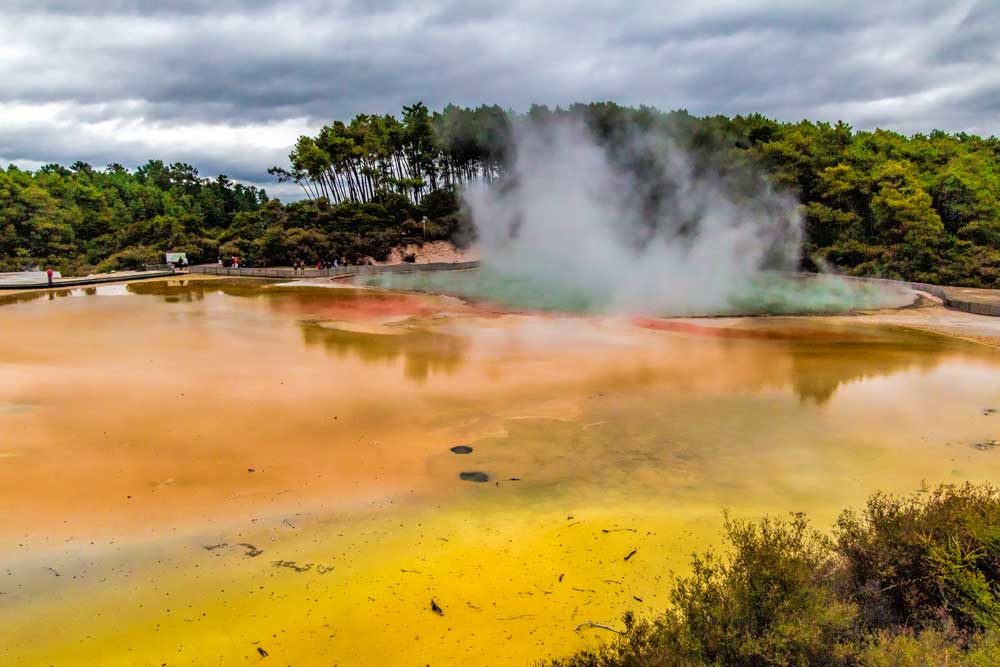
New Zealand has many geothermal areas with some of the most dramatic concentrated in the area between Rotorua and Taupo. To see a lake boiling, a vent in a cliff face exhaling steam, pressurised water naturally exploding from the earth and bubbling mud can be quite a unique experience and it’s worth putting some time aside while in New Zealand to visit Rotorua and experience it for yourself.
While there are many places to witness the phenomena in some form, there are 5 key sites that you will want to choose between in the area as most visitors will not have the time or budget for all of them, we’ll also cover a few free options or different experiences you might want to add to your trip.
The top 5 Rotorua Geothermal Parks are:
- Whakerewarewa
- Waiotapu
- Hell’s Gate (Tikitere)
- Waimangu
- Orakei Korako (The Hidden Valley)
We’ve visited all 5 over the years and there are good reasons why you might choose any of them but here we’ll try to help you narrow it down.
Whakarewarewa geothermal valley
Located in central Rotorua this is the easiest of the geothermal parks to get to on foot or using public transport from your city accommodation. It’s also the most touristy and the busiest of the 5 geothermal areas.
This one can be a little confusing as the Whakarewarewa geothermal valley is covered by 2 tourist operations, one going by the name Whakarewarewa and the other Te Puia. You can see the famour geyser from both but Te Puia has the better view.
If you’re short on time then this option may appeal both with reduced travel time to get here and that it is a geothermal site and cultural experience in one. A visit to Whakarewarewa takes you inside a Maori village to learn how the geothermal landscape has been incorporated into daily life in the region for centuries. In addition to the geothermal aspect of the park, a visit to Whakarewarewa includes cultural shows, regular guided tours, an opportunity to taste food from the hangi (at extra cost) and other interactive experiences. The ticket price for Whakarewarewa higher than other parks but includes the additional tourist entertainment on offer.
Pōhutu meaning ‘constant splashing’ in Māori) is New Zealand’s largest geyser and is extremely active, it’s been known to erupt up to 30 metres into the air and will generally go up once or twice each hour so you will almost certainly get the chance to see it when you visit.
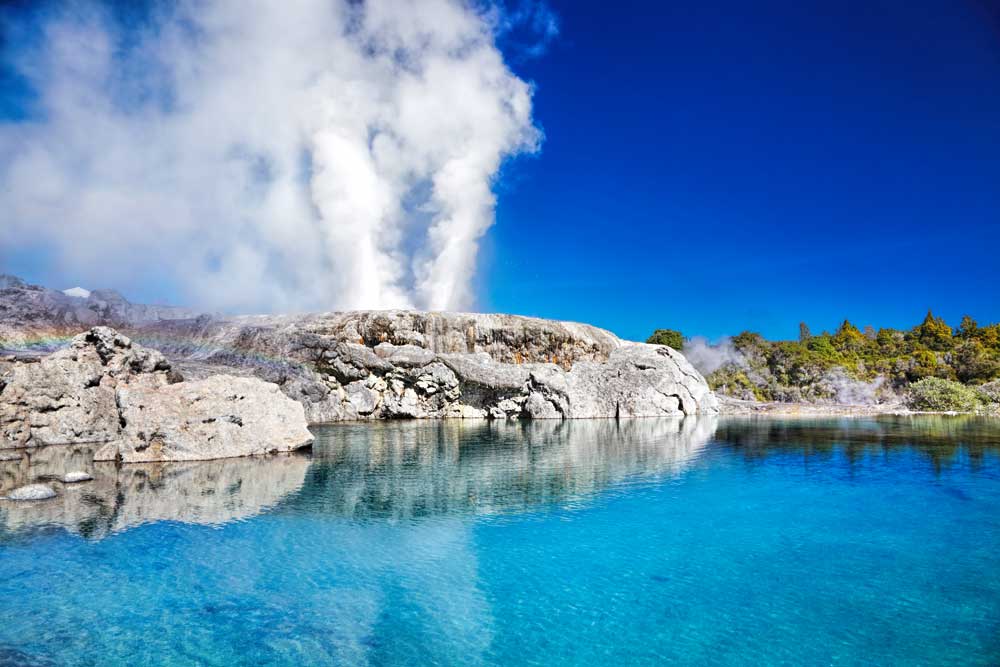
Te Puia ticket price is lower and offers a better view of the geyser, you can explore the walking trails through the geothermal area, there’s a model pre-European Maori village here and a kiwi house giving the opportunity to view a pair of these nocturnal birds that are rarely sighted in the wild.
Within the 60-hectare Te Whakarewarewa geothermal park, there are hundreds of hot pools, mud pools and various walking trails to explore both on the guided tours or on your own.
The Pro’s
- Close to town
- New Zealand’s largest geyser
- Includes cultural displays
The Con’s
- Can be very crowded
- More touristy than the others
- Most expensive entry ticket
Waimangu
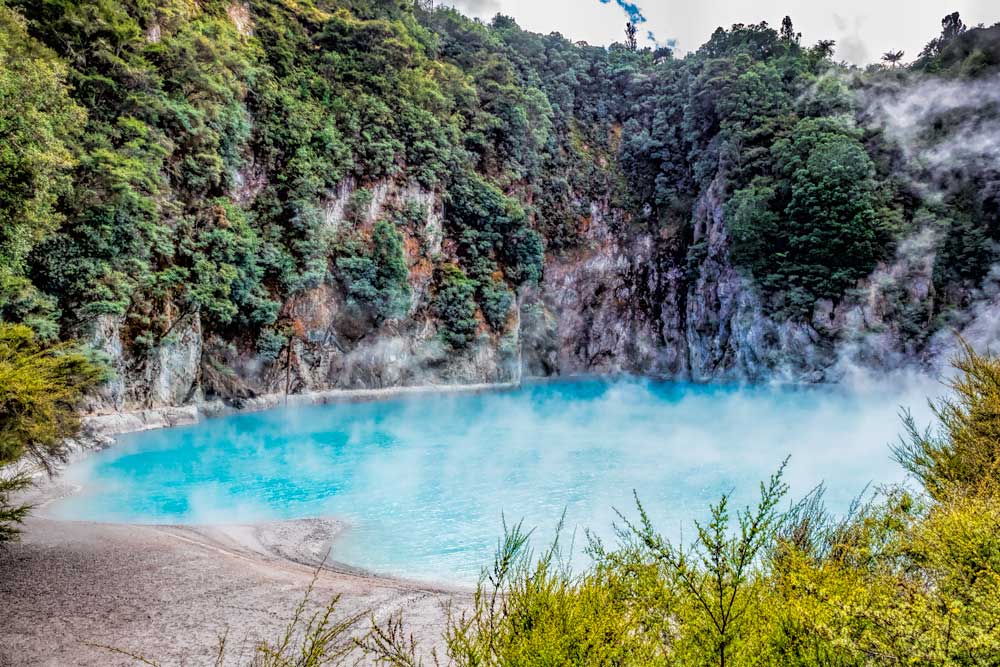
Waimangu is a park but is the least busy of the 5 and once you are out on the walking tracks it can feel more like you are out in the New Zealand bush discovering the dramatic geothermal features as you go. This is largely due to the scale of the park and the individual attractions are on a different scale. The steaming frying pan lake with the steam venting from the hillside behind for example was difficult to capture well even in a panorama.
The main route will take you 3.6 km mostly downhill from the visitors centre to the lake roughly following the hot stream running from the Frying Pan lake to Lake Rotomahana. You’ll see 32 individual landscape features that are well-marked and explained both on your map and by signposts along the way. A courtesy bus will bring you back up from the lake to the visitors centre and cafe.
Most of the more dramatic features are in the first half of the walk, the most popular features at Waimangu being the Echo Crater, Frying Pan Lake and Inferno Crater but there is plenty to see all the way along and the lake at the bottom is beautiful.
There are a couple of detours too that will extend the walk slightly taking in a few additional features or a slightly different environment. There is also an optional boat cruise you can take out on Lake Rotomahana at the bottom to see the area from the water.
The combination of regenerating native bush and wetlands means the area is full of birds, frogs and lizards. To do this one at your own pace if you enjoy stopping to really take in the scene I’d allow at least half a day, longer if you plan to do the boat cruise or take a relaxed pace.
This is one of our personal favourites and we’ll have a detailed article on visiting Waimangu and a photo tour linked up here soon.
The Pro’s
- Only 20 minutes from the city
- Very natural native environment
- Less busy than the others
- Courtesy bus back up the hill
The Con’s
- Quite a bit of walking to see it all
- Individual features are spread out
Check ticket prices for Waimangu Valley tour with city transfers
Wai-o-tapu
Wai-o-tapu is another personal favourite and one we highly recommend to friends and overseas visitors if they only have time to see one and want to incorporate seeing some of New Zealand’s natural beauty with the wonders of geothermal activity. We’ll have a detailed article and photo essay linked up here soon.
Wai-o-tapu has the most colourful features of the 5 parks, these are caused by the minerals in the water but creates some beautiful and bizarrely otherworldly effects like the Roto Karikitea Pool shown below, this lime green water is caused by mineral sediment suspended in the water and is extremely acidic. On a sunny day it appears even more vibrant than this.
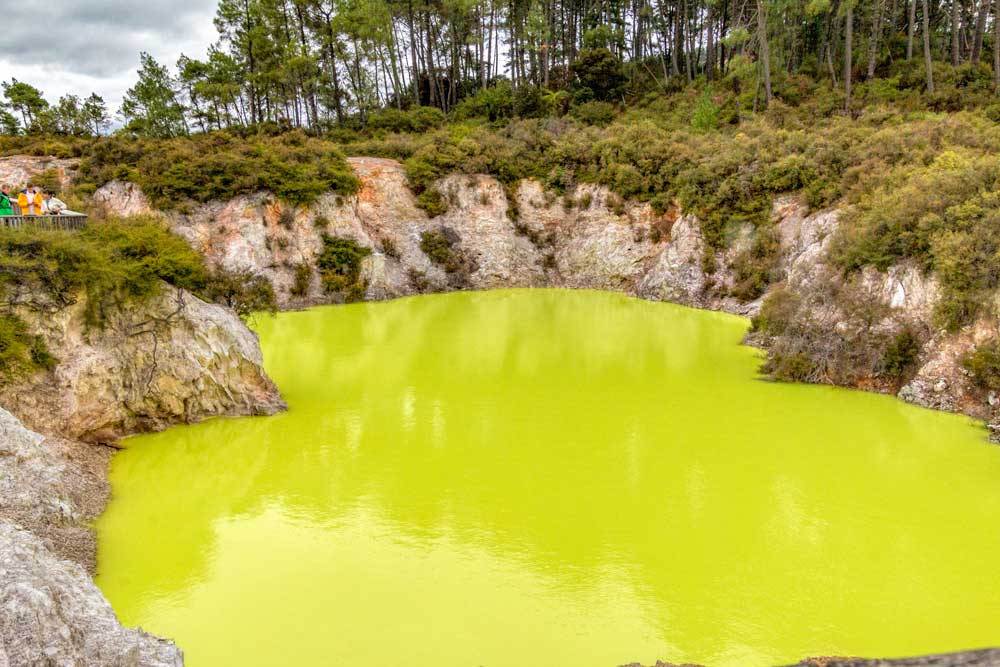
There is plenty of variety to see here within the 18km2 reserve. You follow a series of 3 loop tracks that are connected so you can see the whole thing as an approximately 3 km round trip or break off the sections. The first section loop (approx 1.5km) is wheelchair accessible.
The Lady Knox Geyser is part of this complex too but is separate to the main park so follow the sign to that car park first. It only plays once a day at 10.15 am so you will need to time your visit around that if you want to include it.
The Pro’s
- Least expensive entry ticket
- Beautiful native bush and lake
- Most colourful geothermal features
- Only 20 minutes from the city
The Con’s
- Geyser displays infrequently
- Quite a bit of walking to see it all
Check ticket prices for Wai-o-tapu
Hell’s Gate (Tikitere)
If bubbling mud fascinates you then Tikitere or Hell’s Gate is the best spot to see that. The Maori name, Tikitere, comes from a rather sad local legend about a mothers grief when a Maori Princess commits suicide over domestic abuse. Unlike the other thermal parks, the European name Hell’s Gate is still commonly used here. The Irish Playwright George Bernard Shaw visited in 1934 and exclaimed on seeing the mud boiling and earth erupting spurts of boiling water that ‘this could be the very gates of hell’. The name ‘Hell’s Gate’ was adopted by local Maori as the name in English.
If the idea of bubbling mud and water fascinates you then this is a great place to see that. Unlike some of the areas further south there is less of the colour that comes with the silica terraces and mineral suspension in the water, the landscape is more notably grey and brown.
What is does have is a beautiful cascading hot water waterfall, a mud volcano that erupts steaming lumps of mud and a spa (at extra cost) where you can immerse yourself in the mineral-rich hot mud and water. The healing and anti-inflammatory properties of both have been known and used by local Maori for centuries.
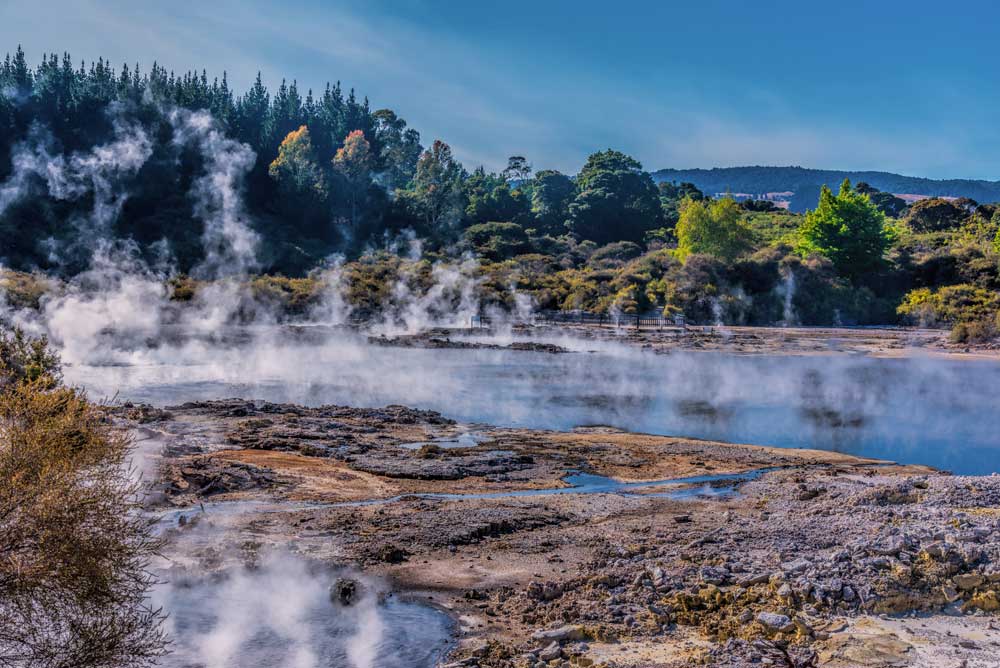
The Pro’s
- Only 20 minutes from the city
- Mud and hot pool onsite
- Cascading hot water waterfall
The Con’s
- Less photogenic than others
- Pools are basic
- Mud is hard to get out of swimsuits
Check ticket price for Hell’s Gate
Orakei Korako – The Hidden Valley
This is a stunning geothermal area, the only reason I believe it’s not more popular is that it is significantly out, the others are within 20 minutes of Rotorua, Orakei-Korako is just under an hours drive south and closer to Taupo. We visited on the way home from Taupo one year and it’s perfectly positioned if you are travelling up or down the country.
You start out with a short boat trip across the lake to the geothermal area, it’s included in the ticket price and is available as you need it, it doesn’t operate on a rigid timetable. Then you follow the well-marked board walks through the bush and silica sinter terraces with their bright white and vibrant hues.
Compared to the others the parks it is smaller but has a friendly intimate feel and with the boat ride over you have more interaction than just the ticket desk. You probably only need to allow 2 hours to see this one but it is beautiful, especially on a sunny day when the colours pop.
The expansive and vibrant silica sinter terraces that Orakei Korako is best known for but another unique formation here is Ruatapu cave which was formed in the volcanic tuff of a volcano that erupted around 100,000 years ago. There is also a smaller geyser, steam venting from solid ground and water and a pool with the colourful microbial mats formed around the edges.
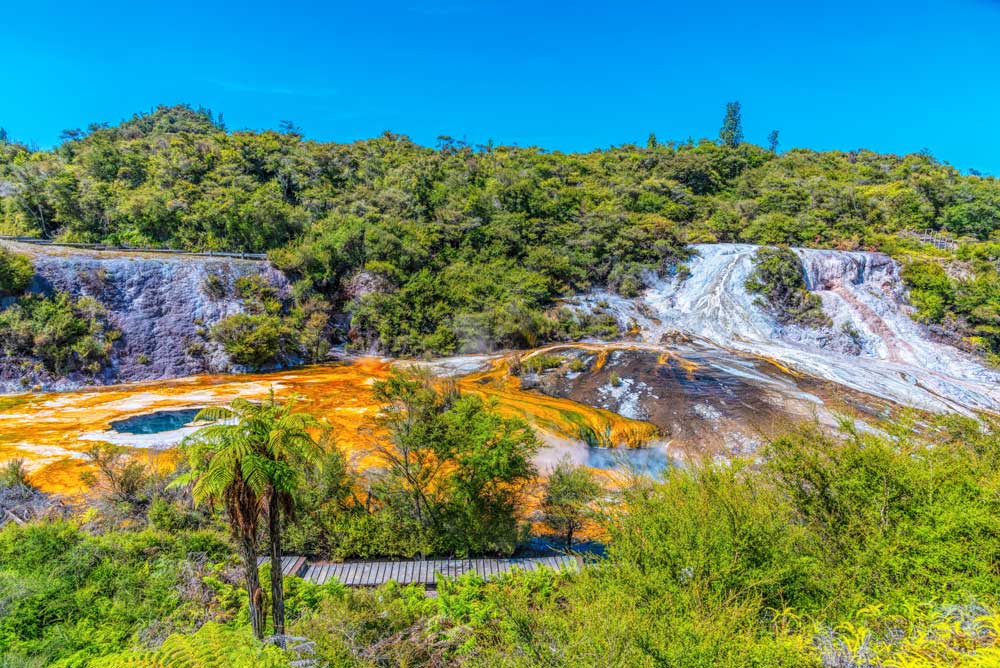
The Pro’s
- Lake crossing included in the ticket
- Silica terraces
- Geothermal cave
- A lot to see in a smaller area
The Con’s
- Furthest from Rotorua city
- Smaller than some others
Which Rotorua geothermal park is best for you?
| Attraction | Best for | Base Ticket | Known for |
|---|---|---|---|
| Whakarewarewa | Limited time | $45 | Geyser |
| Te Puia | Limited time | $30 | Geyser |
| Waimangu | Nature lover | $42 | Scale / wildlife |
| Wai-o-tapu | Photographers | $32.50 | Colour/geyser |
| Hells Gate | Spa seekers | $39 | Bubbling mud/ hot waterfall |
| Orakei Korako | Continuing south | $39 | Silica terraces |
Other Geothermal attractions to consider
At least one of the top 5 geothermal parks should be included on the itinerary for a first time trip to Rotorua but there are some other related attractions and free geothermal spots you might also want to include to round out your time in the city.
Polynesian Spa
Soaking in the mineral rich geothermal waters is a blissfully relaxing experience and doing it with fabulous views out over Lake Rotorua is something I wouldn’t want to miss on a visit to the city.
The Polynesian Spa is a regular feature on our itinerary when we are in Rotorua or passing through and something I recommend to everyone. While it primarily appeals to the adults there is a family pool area that the whole family can enjoy.
Read More: Our most recent visit to the Polynesian Spa in Rotorua
Kuirau Park
A free option to see the geothermal activity up close is Kuirau Park, it’s easy to access near the centre of the city. Walk the paths and boardwalks through the steaming bubbling ponds and mud pools.
One of my favourite attractions here is the natural hot water foot pool. We first came across foot spa or ‘Ashiyu’ in Hakone in Japan, later discovering them in the mountains around Osaka and several other spots. After a day on your feet, especially after hiking on a cold day, they are a great way to revive and re-energise yourself. This is the first and only one I’ve come across in New Zealand and it’s a highlight of this park.
Sulphur Point Wildlife Sanctuary
Another free spot to visit is the Sulphur Point Wildlife Sanctuary on the shores of Lake Rotorua. The geothermal environment is a tough one but a surprising number of birds and plants are thriving in the area.
Walk along the paths and you’ll not only spot the wildlife but steam rising up from the ditches, boiling water and bubbling mud in places. The water is milky and heavy with minerals. It’s perfectly safe to walk around but stay out of the water and resist the temptation to warm your toes in the naturally hot water, the acidity levels are unpredictable and can cause nasty burns from both temperature and the natural chemical levels.
Kayak out to a lakeside hotpool
This one was high on our list of things to do in Rotorua on our last trip, we were booked in but severe winds cancelled our morning paddle and our attempts to reschedule were thwarted when our trip was shortened by the imminent pandemic lockdown. You can bet this one is back on our list for our next trip home.
There are a couple of companies that offer similar trips with some variations but the general plan is to kayak out on the peaceful lake, check out a glowworm cave from the boat and a stop for a hot drink and a soak in the lakeside hot pools that can only be accessed by boat or a longish hike. Sounds blissful, right?
This is the one we were booked on and their communication with the weather conditions, attempts to get us rescheduled and prompt refund when we couldn’t make the timing work will mean we have no hesitation in using them again next time.
If you found this useful please consider saving it to Pinterest. It helps us, and it helps other travellers to find the information they need.
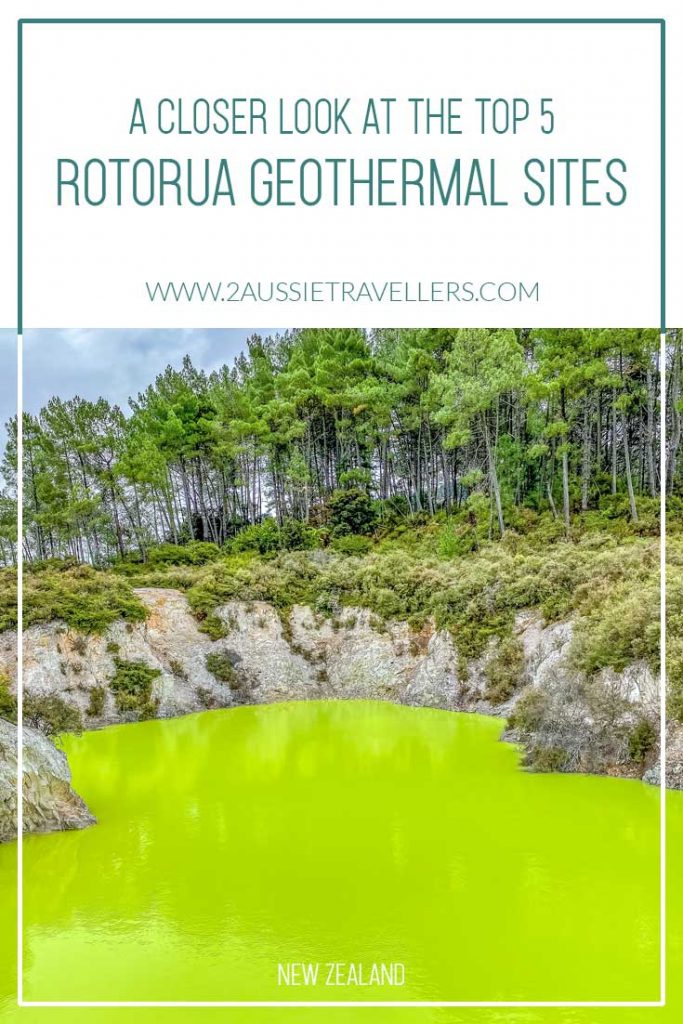
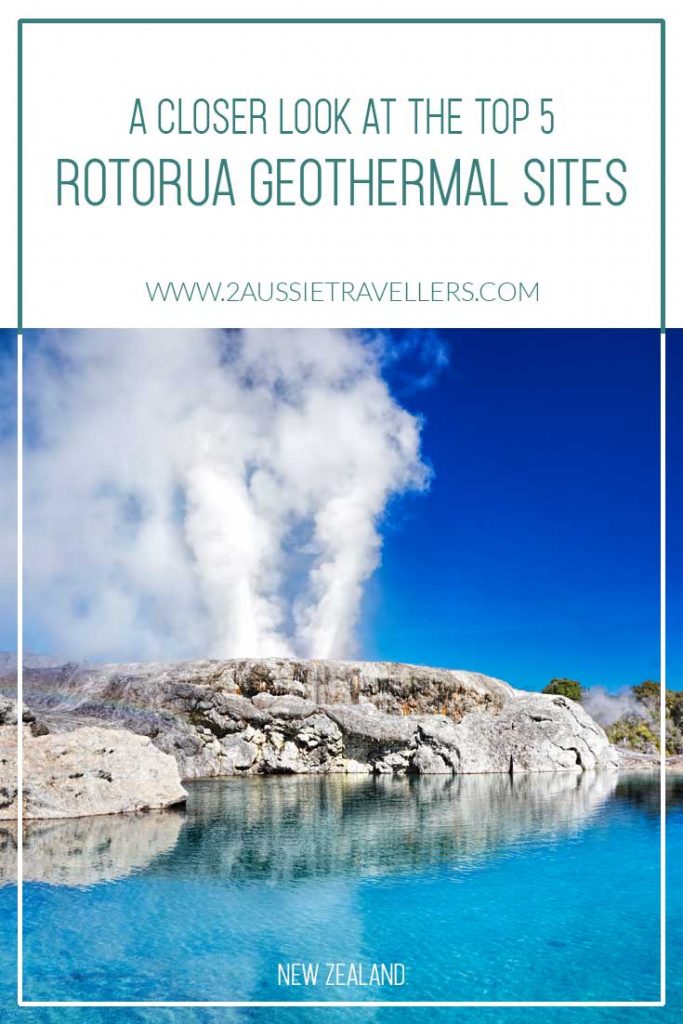
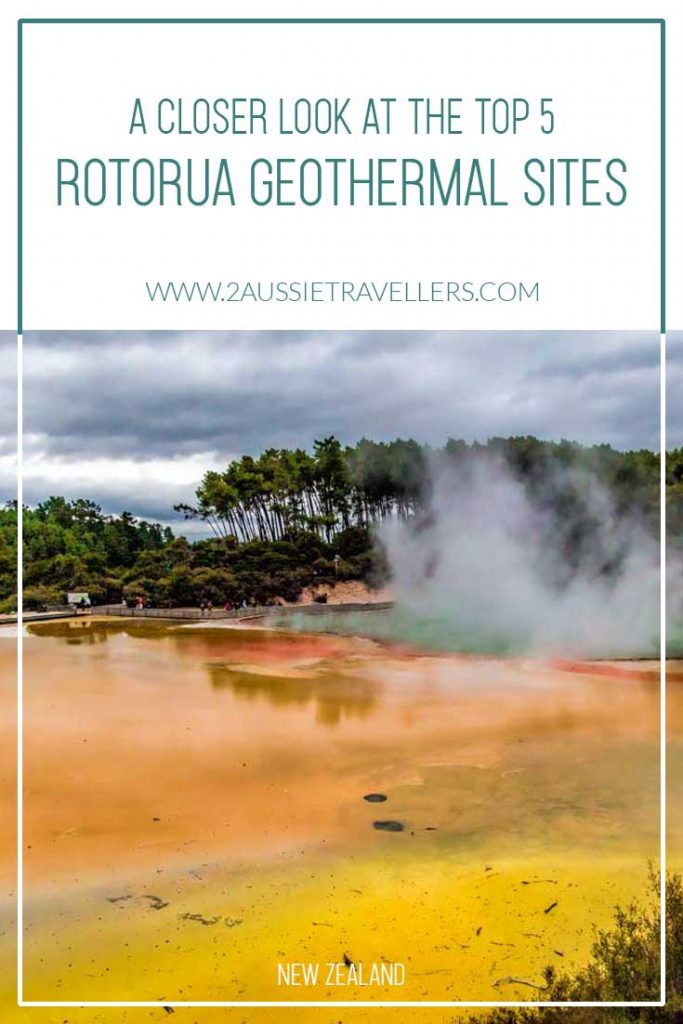
The post Which Rotorua Geothermal Park to Visit appeared first on 2 Aussie Travellers.
from 2 Aussie Travellers
No comments:
Post a Comment